The Arts Desk
David Nice
05.08.23
Photo Credits: Kaupo Kikkas
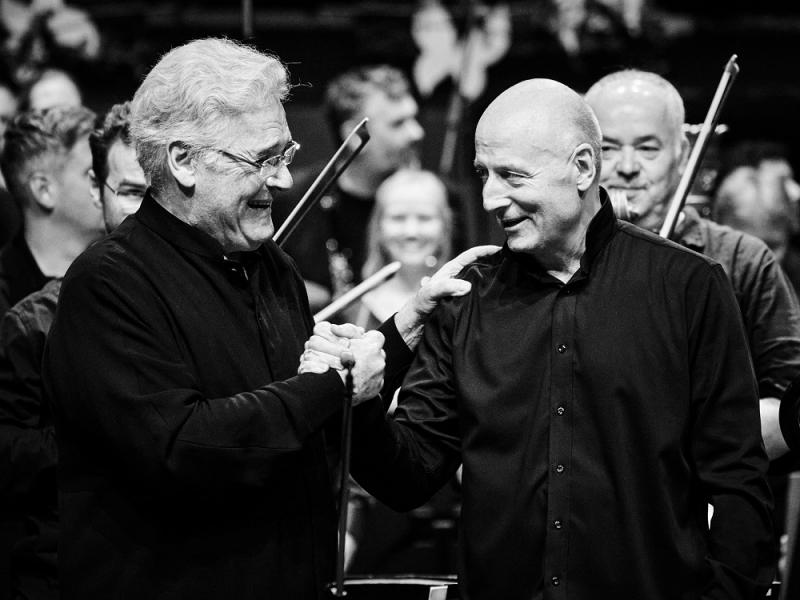
Circumstances matter here. The annual visit to what remains my favourite music festival in the world was going to be khyboshed by the date fixed for a big hospital operation. But the Pärnu Music Festival worked overtime to get me rebooked to the first slice of the 10 days, while my Macmillan nurse fixed up five crucial meetings and tests on the two days before my new departure date. I went, came back the evening before the 12-hour op and still can’t believe it all happened.
That also shifted my usual expectations: I like to go for the big chamber concert featuring the world-class musicians of the Estonian Festival Orchestra – many of them friends of Paavo Järvi from the ensembles he conducts around the world – and the final feast of music from the Festival Academy Orchestra (a brilliant youth group plus some of their mentors) giving the budding stickwavers on the conducting course a chance to shine. All this could eventually be caught on PMF TV (and still can; buffering wasn’t good enough when I was eventually well enough to watch in hospital). 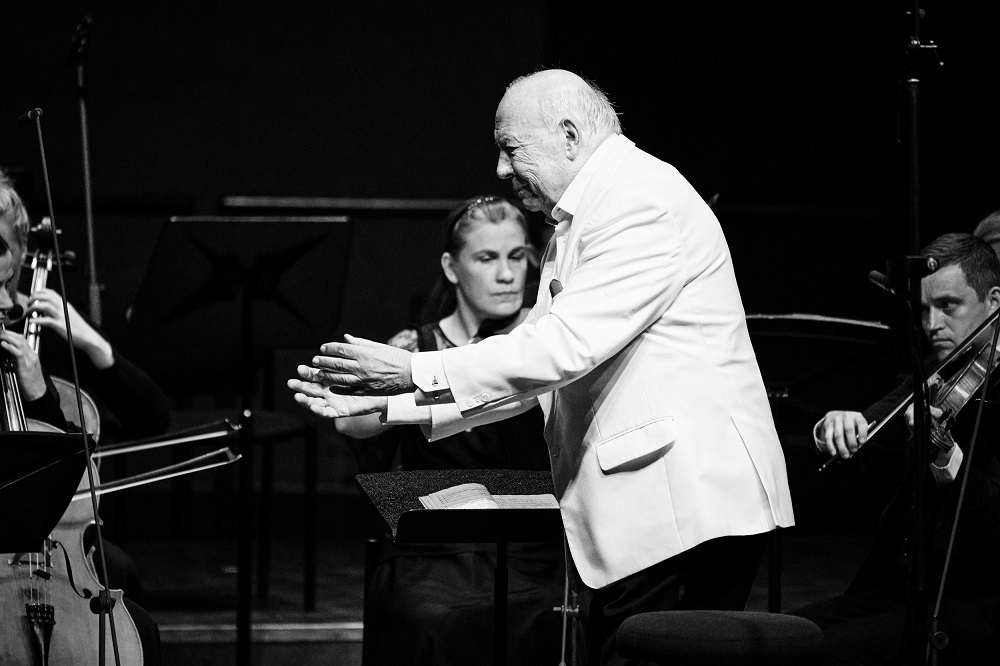 Instead, in addition to two of the four EFO concerts, I experienced an intoxicating 90-minute homage to Babylon Berlin – Kristjan Järvi, to my surprise, had worked on the music for the (IMO) best-ever TV drama series with Johnny Klimek and Tom Twyker - and at last got a glimpse of what always happens at the beginning of the festival: patriarch Neeme Järvi, now 86, in charge of a not-too-taxing concert with chamber orchestra. Our car from Riga got snarled in traffic in the Latvian capital, and the Mozart Divertimento of the first half had already begun when we swept into Pärnu’s Concert Hall. But that was fine: didn’t Auden describe those pretty bagatelles as designed for half-listening while "Milord chewed noisily, Milady talked"?
Instead, in addition to two of the four EFO concerts, I experienced an intoxicating 90-minute homage to Babylon Berlin – Kristjan Järvi, to my surprise, had worked on the music for the (IMO) best-ever TV drama series with Johnny Klimek and Tom Twyker - and at last got a glimpse of what always happens at the beginning of the festival: patriarch Neeme Järvi, now 86, in charge of a not-too-taxing concert with chamber orchestra. Our car from Riga got snarled in traffic in the Latvian capital, and the Mozart Divertimento of the first half had already begun when we swept into Pärnu’s Concert Hall. But that was fine: didn’t Auden describe those pretty bagatelles as designed for half-listening while "Milord chewed noisily, Milady talked"?
Essential to be there in the hall for, though, was Neeme’s take on Haydn’s “Farewell” Symphony, the work on which he insisted. Not a statement of intent in a general sense: at the start of the Estonian National Symphony Orchestra’s 2023-4 season, he’s down for Mahler 8 and 2 within weeks. But at that stage of life, every festival could be the last; and besides, it played to his trademark humour. The interpretation with Sinfonietta Riga (pictured above) was unorthodox, fascinating: the ghostliest of second movements, the real liminal adventure, before the more theatrical “farewell”. We could probably have done without the two interpolated "homages", Madis Järvi's Haydn went mad and Haydn screams, but it looked like a good idea in principle.
Visually the farewell didn’t work because the hall was lit, complete with artificial flowers, like a Soviet Palace of Culture in the 1970s – some of this did get toned down over the coming days, not enough – so the gambits with candles and lights switched off on music stands as the players gradually left didn’t really register. The poignancy of the octogenarian conductor left with two exquisite violinists, and then alone, did work. And trust Järvi senior to do the encore completely differently, much more for laughs. He earned the ecstatic ovation, but he’d only have to raise his baton for Estonian audiences to go wild. 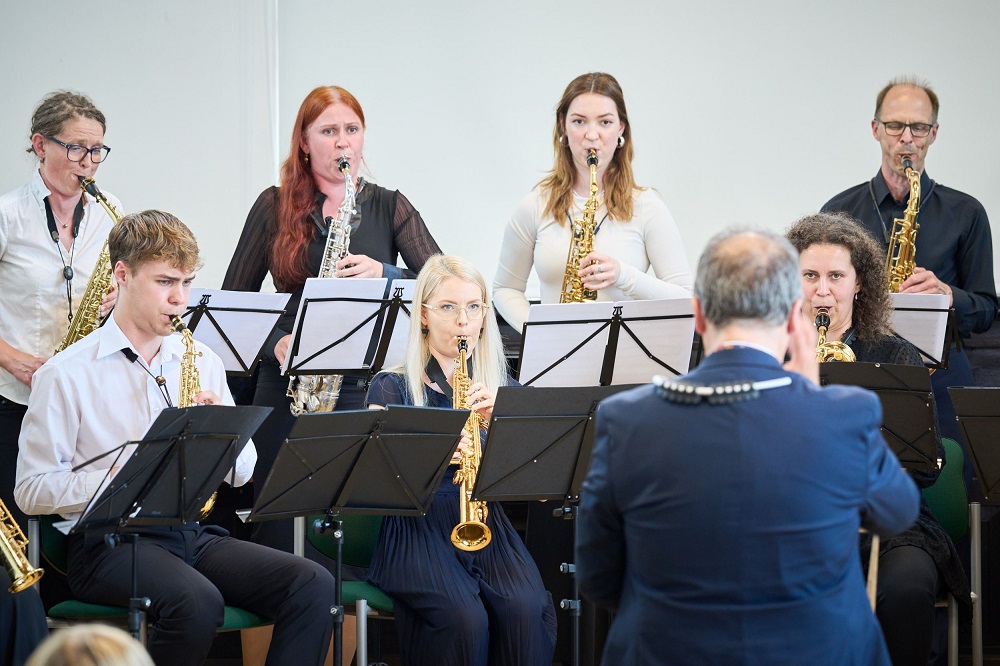 The next day was the richest of all in terms of What I Would Have Missed If I’d Gone Later – three concerts, all with something of the strange and rare about them. Sax is now big in Estonia, and the recently-founded Estonian Saxophone Orchestra made an appropriately big and original splash in an afternoon event at the Town Hall. Artistic Director Johan van der Linden, one of the many distinguished teachers at this year’s Järvi Academy, may be Dutch, but the emphasis was on the players’ compatriots (some of the players pictured abovewith van der Linden).
The next day was the richest of all in terms of What I Would Have Missed If I’d Gone Later – three concerts, all with something of the strange and rare about them. Sax is now big in Estonia, and the recently-founded Estonian Saxophone Orchestra made an appropriately big and original splash in an afternoon event at the Town Hall. Artistic Director Johan van der Linden, one of the many distinguished teachers at this year’s Järvi Academy, may be Dutch, but the emphasis was on the players’ compatriots (some of the players pictured abovewith van der Linden).
Veljo Tormis is, alas, no longer with us; like the work played by the EFO in 2020 (and subsequently recorded), To the Moonlight, his music for the film The Spring as arranged by Joonas Neumann was spangled with atmospheric magic, a haunting main theme running through it. Brillliant dynamism was the keynote of Erkki-SvenTüür’s “Illusion”, from the 1993 cycle Action. Passion. Illusion, a work I wanted to hear again immediately. And the great Tõnu Kõrvits was present for more atmospherics in his Landscapes from the Night Train; later in the first Academy Gala, van der Linden would duet hauntingly with percussionist Henrik Knarborg Larsen (another tutor) in Kõrvits' The Source. 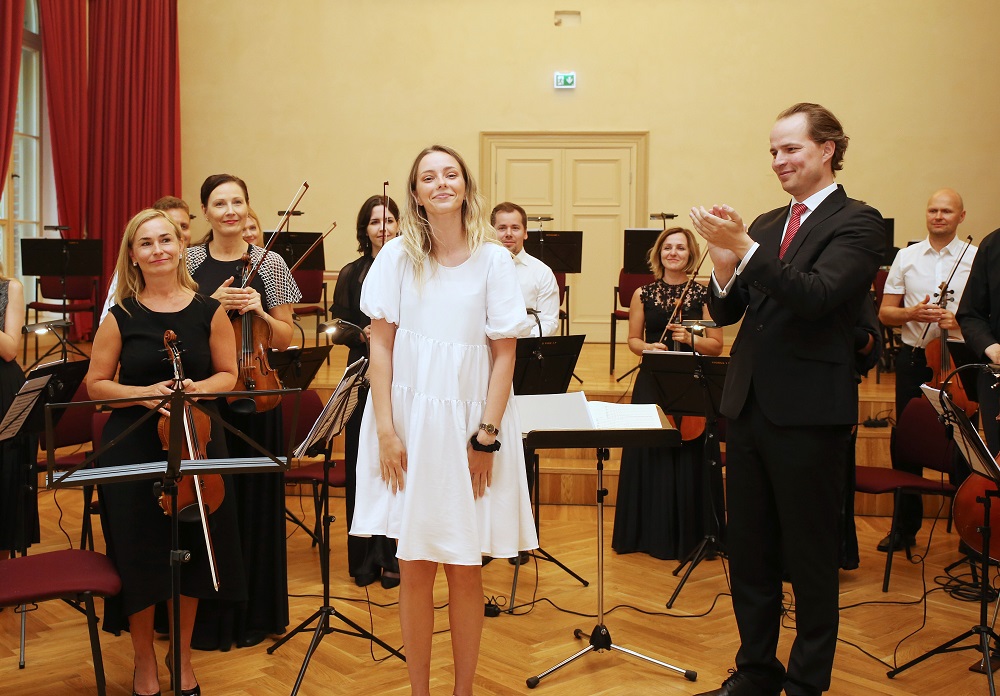 Biggest contemporary surprise of the day, at the start of a Pärnu City Orchestra concert masterminded by EFO violinist Mikk Murdvee in the handsome main room of the 1903 school, was 21-year old Alisson Kruusmaa’s Five Arabesques for Chamber Orchestra: what an original voice, with a real sense of the numinous in the fluting dissolves of sustained string lines (the composer pictured above with Murdvee and players). Paavo asked me later what I thought, and said it confirmed that he ought to commission a work from her.
Biggest contemporary surprise of the day, at the start of a Pärnu City Orchestra concert masterminded by EFO violinist Mikk Murdvee in the handsome main room of the 1903 school, was 21-year old Alisson Kruusmaa’s Five Arabesques for Chamber Orchestra: what an original voice, with a real sense of the numinous in the fluting dissolves of sustained string lines (the composer pictured above with Murdvee and players). Paavo asked me later what I thought, and said it confirmed that he ought to commission a work from her.
The biggest sunshine of the day – indeed probably of the time I spent at the festival – was Mozart’s Sinfonia Concertante for Violin and Viola with two EFO star players, Triin Ruubel (who shares the front desk with Florian Donderer) and Xandi van Dijk (viola in Donderer’s Signum Quartet, and not entirely incidentally the partner of Trin's twin sister and first-rate pianist Kärt, since a lovelier couple you couldn’t find - I was immensely pleased to get to know them better on one Passion Café evening). It seemed unlikely that the top partnership I’d heard most recently in this work, Isabelle Faust and Antoine Tamestit, could be equalled, but they were; for me the spirit of delight was the same. Xandi is now renaming himself “Antoine”. Murdvee’s conducting provided perfect partnership, and the finale went at a beautiful, always clearly-articulated lick. 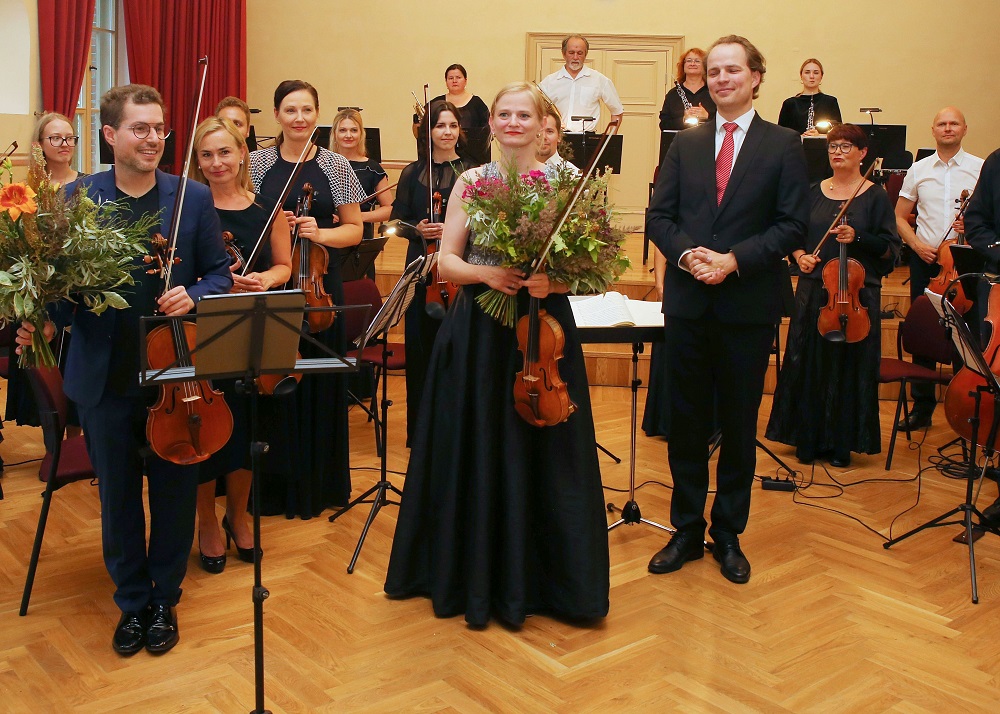 Sorrowful to leave the concert at mid-point, because I needed to change before the big evening event, missing a work that has received such high praise, Louise Ferrenc’s Third Symphony. But had I stayed, I’d not have heard the gorgeous Sextet from Strauss’s Capriccio (with van Dijk as the viola player). Teachers from the Academy treated us in the first half, which culminated in another gem I didn’t know, Hindemith’s Little Chamber Music for Wind Quintet (flautist Niamh McKenna, oboist Kyeong Ham, clarinettist Tuulia Ylonen, horn-player Björn Olsson and bassoonist Jesús Villa Ordóñez, all world-class, of course, pictured below).
Sorrowful to leave the concert at mid-point, because I needed to change before the big evening event, missing a work that has received such high praise, Louise Ferrenc’s Third Symphony. But had I stayed, I’d not have heard the gorgeous Sextet from Strauss’s Capriccio (with van Dijk as the viola player). Teachers from the Academy treated us in the first half, which culminated in another gem I didn’t know, Hindemith’s Little Chamber Music for Wind Quintet (flautist Niamh McKenna, oboist Kyeong Ham, clarinettist Tuulia Ylonen, horn-player Björn Olsson and bassoonist Jesús Villa Ordóñez, all world-class, of course, pictured below). 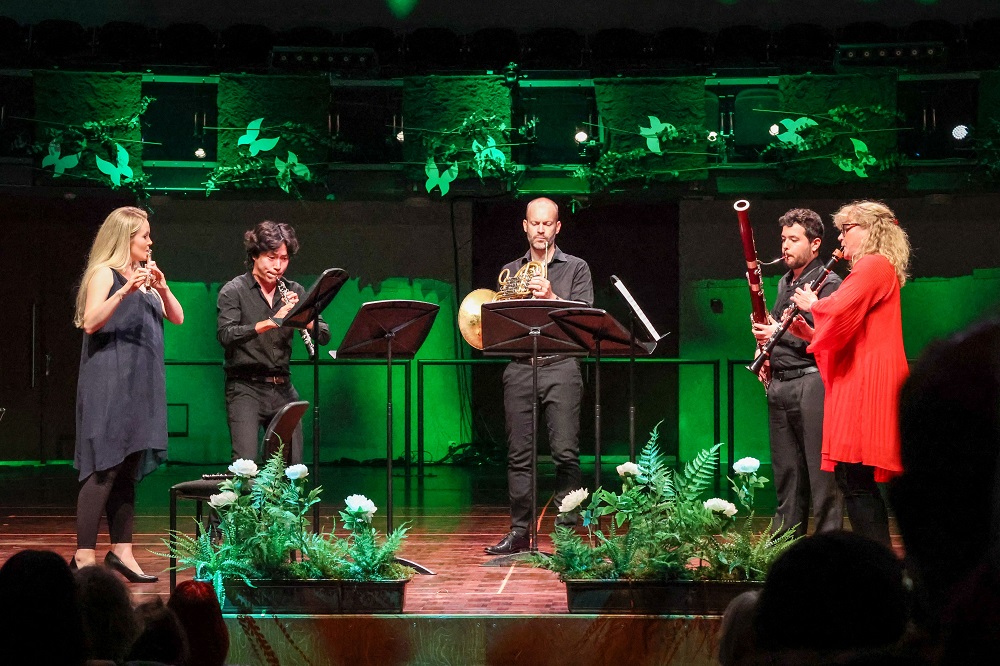 The young trainees on the Academy Conducting Course had a movement each with the young professionals of the Järvi Academy Sinfonietta (a third orchestra in addition to the EFO and youth-orchestra Academy proper) in the second half. The haunting mid-point was Ukrainian-born Estonian citizen Galina Grigorjeva’s The Prayer (Molitva) with consummate cellist Theodor Sink (pictured below) as soloist (he’s provided one of the best experiences in all of the PMFs I’ve attended in a searing performance of Lepo Sumera’s great Concerto).
The young trainees on the Academy Conducting Course had a movement each with the young professionals of the Järvi Academy Sinfonietta (a third orchestra in addition to the EFO and youth-orchestra Academy proper) in the second half. The haunting mid-point was Ukrainian-born Estonian citizen Galina Grigorjeva’s The Prayer (Molitva) with consummate cellist Theodor Sink (pictured below) as soloist (he’s provided one of the best experiences in all of the PMFs I’ve attended in a searing performance of Lepo Sumera’s great Concerto).
The conductor’s role is unobtrusive, so I asked Theodor later what he thought. Excellent, came the reply, because the cellist’s role in this meditation where the solo voice finally falls silent is about 70 per cent improvised, so Finnish-American Aku Sorensen needed to be exceptionally vigilant, and he was: another beneficiary of superb training from Jorma Panula and others in Helsinki. 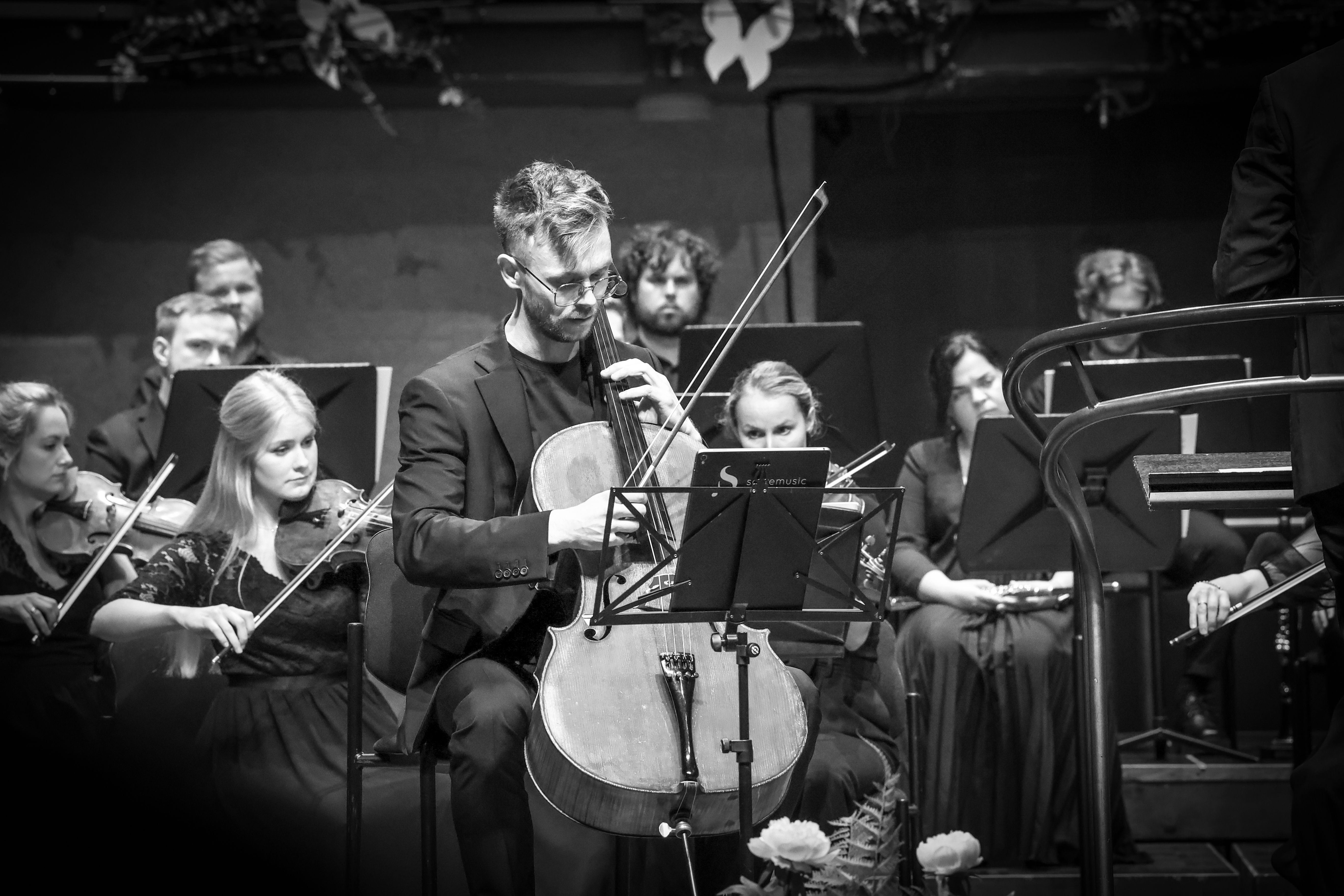 The symphonies flanking this revelation were such a pleasure to hear in the hands of this subtle ensemble, with hyper-delicate strings, that I didn’t really rank the performances, though even if it may be a cliché, I loved the femininity of the phrasing from China’s Yijie Li in the Andante of Mozart’s “Paris” Symphony, No. 31, too rare a visitor to the concert hall, and Nina Haug in the Allegro moderator of Gounod’s First Symphony – a revelation programmed by Paavo Järvi, with whom I agree that it has much of the charm and quirkiness of Bizet’s Symphony in C, even if the themes aren’t quite as memorable.
The symphonies flanking this revelation were such a pleasure to hear in the hands of this subtle ensemble, with hyper-delicate strings, that I didn’t really rank the performances, though even if it may be a cliché, I loved the femininity of the phrasing from China’s Yijie Li in the Andante of Mozart’s “Paris” Symphony, No. 31, too rare a visitor to the concert hall, and Nina Haug in the Allegro moderator of Gounod’s First Symphony – a revelation programmed by Paavo Järvi, with whom I agree that it has much of the charm and quirkiness of Bizet’s Symphony in C, even if the themes aren’t quite as memorable.
Less impressive was this year’s first appearance by the now-16-year-old Wunderkind Estonian Kasper Joel Nõgene. Last year, having heard much negativity about his carbon-copy conducting before I witnessed him in Tubin’s Prélude Solennel, I thought he had real promise, but his interpretation this time did feel mechanical. It surely wasn’t right that Kristjan Järvi brought him on again to reprise Gounod’s finale. Let him develop away from the limelight. (Pictured belowfrom left to right: Haug, Vanessa Benelli Mosel, Richard Octaviano Kogima, Bernat Quetglas Torelló, Sorensen, Nõgene, Li and Matteo del Maso). 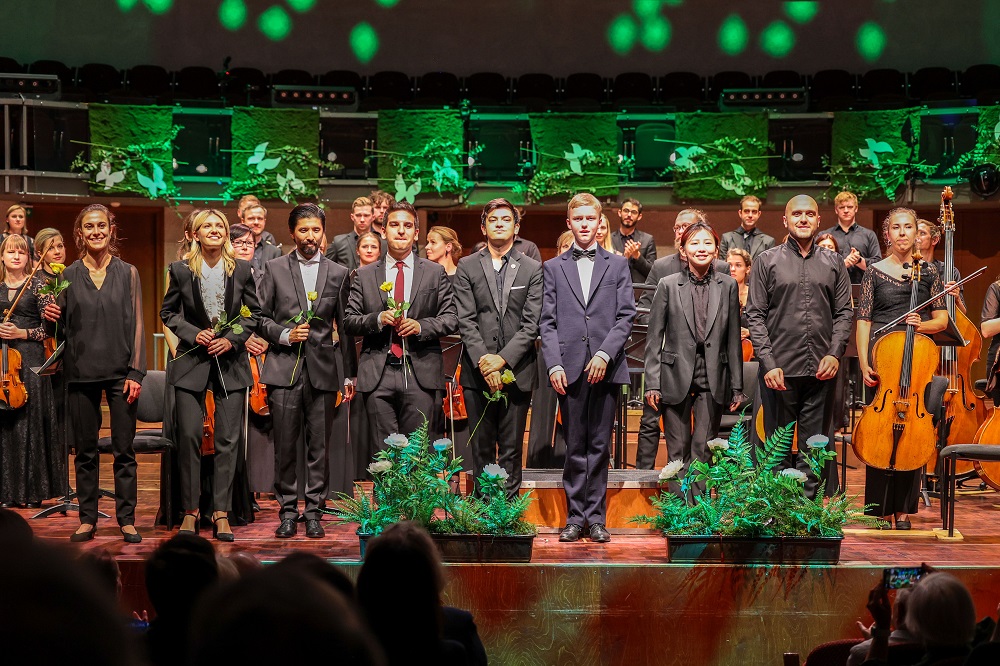 Kristjan’s singular evenings have been hit and miss, but the Babylon Berlinspectacular was a real highlight of all the festivals I’ve attended: slick, stylish and dazzling entertainment throughout, with excellent video work pertinent to the glamour and grit of the series on the five screens. Eventually he’ll be taking his Baltic Sea Philharmonic (plus elaborate backing track) to the German metropolis, and the soloists will be mostly the ones who made such an impact on screen, including Max Raabe with the earwormy “Ein Tag wie Gold” that runs through the fourth series – I was so looking forward to this, and I wasn’t disappointed, even if the tenor-verging-on-heroic Olivier Kuuskik was the only one on stage not totally comfortable in his own skin.
Kristjan’s singular evenings have been hit and miss, but the Babylon Berlinspectacular was a real highlight of all the festivals I’ve attended: slick, stylish and dazzling entertainment throughout, with excellent video work pertinent to the glamour and grit of the series on the five screens. Eventually he’ll be taking his Baltic Sea Philharmonic (plus elaborate backing track) to the German metropolis, and the soloists will be mostly the ones who made such an impact on screen, including Max Raabe with the earwormy “Ein Tag wie Gold” that runs through the fourth series – I was so looking forward to this, and I wasn’t disappointed, even if the tenor-verging-on-heroic Olivier Kuuskik was the only one on stage not totally comfortable in his own skin. 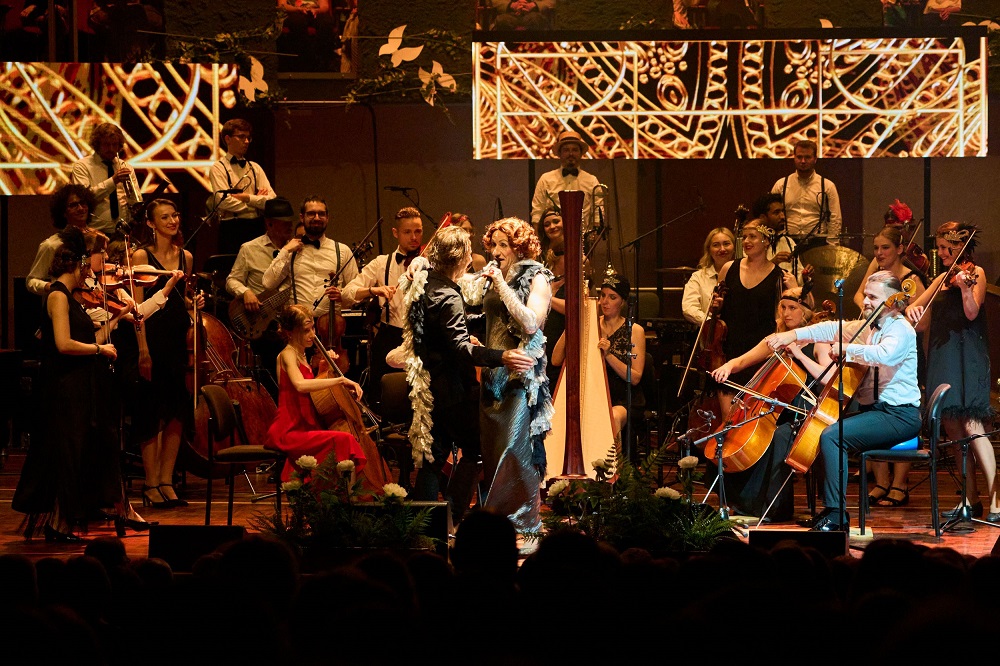 That could never be said of the Estonian cabaret singers/actors Hanna-Liina Võsa, Sandra Uusberg and Erkki Otsman (especially vivid in the drag number, pictured above), the freakishly brilliant coloratura soprano Elina Nechayeva (famous since her 2018 Estonian Eurovision entry) and accordionist Henri Zibo- all exceptional. The big sequence never palled in its contrasts and surprises, though the youngest Järvi did revert to type and milk the over-long handclapping playout. Never doubt his phenomenal energy, though: it was off to the beautifully restored1904 art nouveau Villa Ammende for the “Afterglow”, DJs including a master of period gems and KJ himself. I didn’t stay for long, but it all looked appropriately gaudy and decadent, like a set in Berlin’s Babelsberg, and you could wander the rooms or the garden at will (pictured below).
That could never be said of the Estonian cabaret singers/actors Hanna-Liina Võsa, Sandra Uusberg and Erkki Otsman (especially vivid in the drag number, pictured above), the freakishly brilliant coloratura soprano Elina Nechayeva (famous since her 2018 Estonian Eurovision entry) and accordionist Henri Zibo- all exceptional. The big sequence never palled in its contrasts and surprises, though the youngest Järvi did revert to type and milk the over-long handclapping playout. Never doubt his phenomenal energy, though: it was off to the beautifully restored1904 art nouveau Villa Ammende for the “Afterglow”, DJs including a master of period gems and KJ himself. I didn’t stay for long, but it all looked appropriately gaudy and decadent, like a set in Berlin’s Babelsberg, and you could wander the rooms or the garden at will (pictured below). 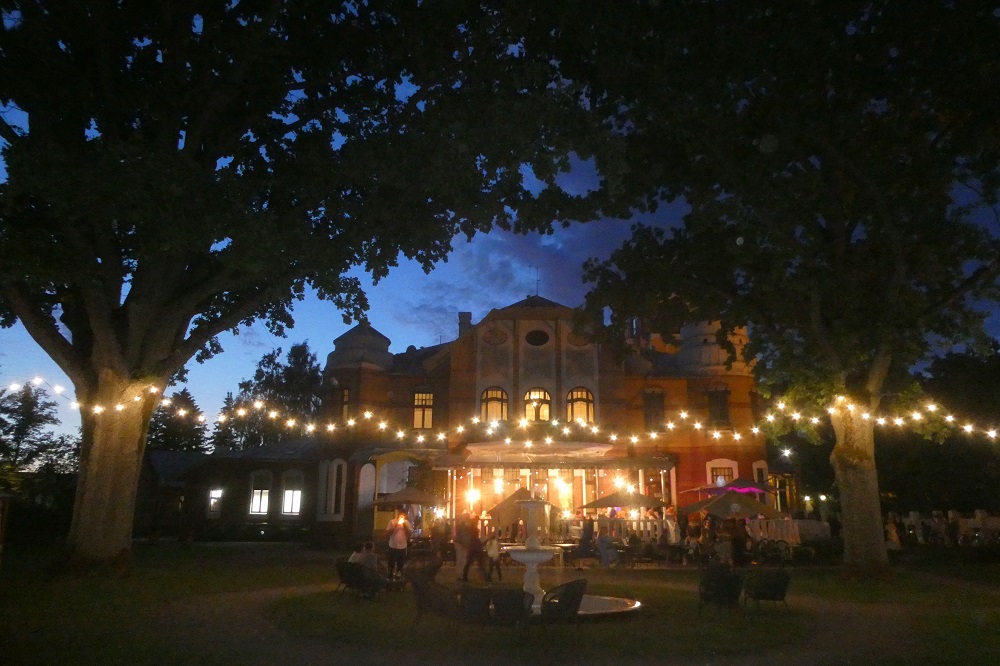
The buzz among the orchestra was to the same effect, especially among the violas, and the performance proved it. Byron’s Harold wandering in the Abruzzi as characterized by the soloist doesn’t over-dominate - this is more a concertante piece than a concerto – but Zukerman managed to be old-style stylish: very much within himself, the polar opposite of Antoine Tamestit, whose interpretation involves perambulations around the orchestra to team with the selective groups of instruments, but still hyper-alert to what was going on around him Jarvi and Zukerman pictured below in rehearsal). 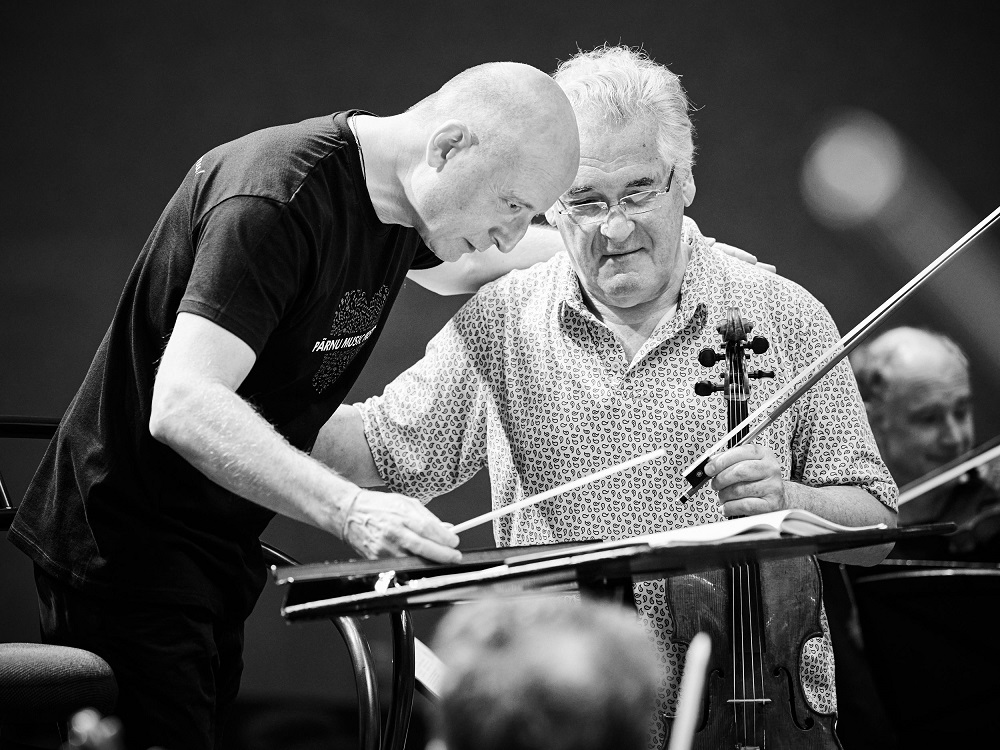 His encore, the first movement of Telemann’s Viola Concerto, was almost outrageously romanticized, but why not? Harold drew the special brilliance of the EFO, tautly and vividly conducted by Paavo Järvi, reinforcing what an original Berlioz still is; every rare detail told, and the brigands’ romp dazzled.
His encore, the first movement of Telemann’s Viola Concerto, was almost outrageously romanticized, but why not? Harold drew the special brilliance of the EFO, tautly and vividly conducted by Paavo Järvi, reinforcing what an original Berlioz still is; every rare detail told, and the brigands’ romp dazzled.
The other components of the programme, to be repeated the following evening alongside different rep with another soloist, didn’t reach quite the same level, at least on first airing. Strauss’s Death and Transfiguration isn’t the best choice for this hall, feeling at times too big and blowsy. The woodwind solos over the dying man’s bed and reflecting his dreams of childhood couldn’t have been lovelier – thanks especially to flautist Pipilota Neostus and the peerless Villa Ordóñez – but for me, Järvi thrust too aggressively and didn’t let the afterlife blossom naturally; it either works or it doesn’t. Second night, it sounded less forced; but it’s no doubt my problem that this is my least favourite of the Strauss symphonic poems. What a Till Eulenspiegel we might get with horn-player Alec Frank Gemmill and clarinettist Matt Hunt, two “souls” of the orchestra. 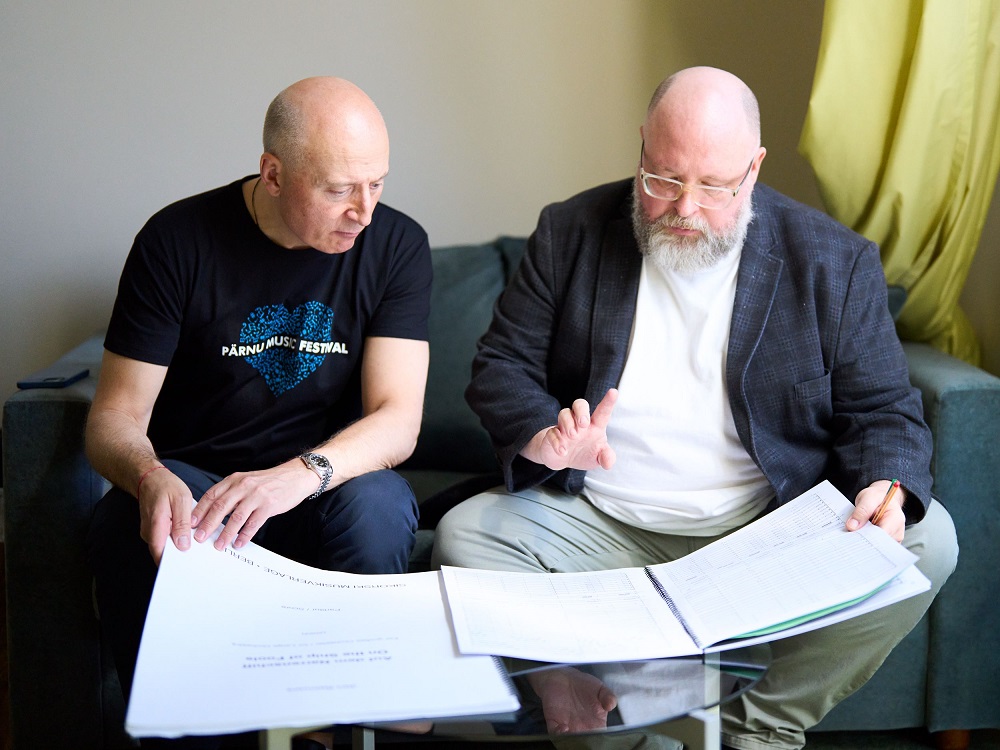 Hugely successful Estonian composer Jüri Reinvere offered the big world premiere of the festival (pictured above in discussion with Järvi). Reinvere writes eloquently on current issues in the press, but his note for On the Ship of Fools – provided separately, since there were, alas, none in the programme – didn’t connect with what I was hearing. The opening made me fear the worst: like thousands of new pieces, the work began with splashes of percussion and woodwind flurries. But an abrasive solo for leader Florian Donderer, echoed by second violin Sharon Roffman, grabbed attention, and percussion tattoos sounded a much more individual note. The fury of the sound at the centre was impressive; would have been more so at half the length; the coda, settling on a haunting unison, sounded truly remarkable. And it all sounded so impressive on the second night; the orchestra had recorded the piece for their next release of Estonian music in between. Who the real Reinvere really is I’m still not sure, but he has so much orchestral magic at his disposal.
Hugely successful Estonian composer Jüri Reinvere offered the big world premiere of the festival (pictured above in discussion with Järvi). Reinvere writes eloquently on current issues in the press, but his note for On the Ship of Fools – provided separately, since there were, alas, none in the programme – didn’t connect with what I was hearing. The opening made me fear the worst: like thousands of new pieces, the work began with splashes of percussion and woodwind flurries. But an abrasive solo for leader Florian Donderer, echoed by second violin Sharon Roffman, grabbed attention, and percussion tattoos sounded a much more individual note. The fury of the sound at the centre was impressive; would have been more so at half the length; the coda, settling on a haunting unison, sounded truly remarkable. And it all sounded so impressive on the second night; the orchestra had recorded the piece for their next release of Estonian music in between. Who the real Reinvere really is I’m still not sure, but he has so much orchestral magic at his disposal.
Berg’s Seven Early Songs rarely make so very much of an impact in the concert hall – they leave me wanting more – despite fleeting magic in the orchestra (excellent trombone work here), but it was in any case not a happy evening for promising Estonian soprano Mirjam Mesak. She looked unhappy, sounded cloudy until soaring into a gorgeous upper register. There should have been an announcement that she was suffering from a throat infection – as I learned only later from members of the orchestra – because reviews like this could well have missed the problem. Strauss’s “Morgen” was lovely, though she still didn’t smile; its anchoring was Donderer’s poised, supernaturally beautiful violin solo. 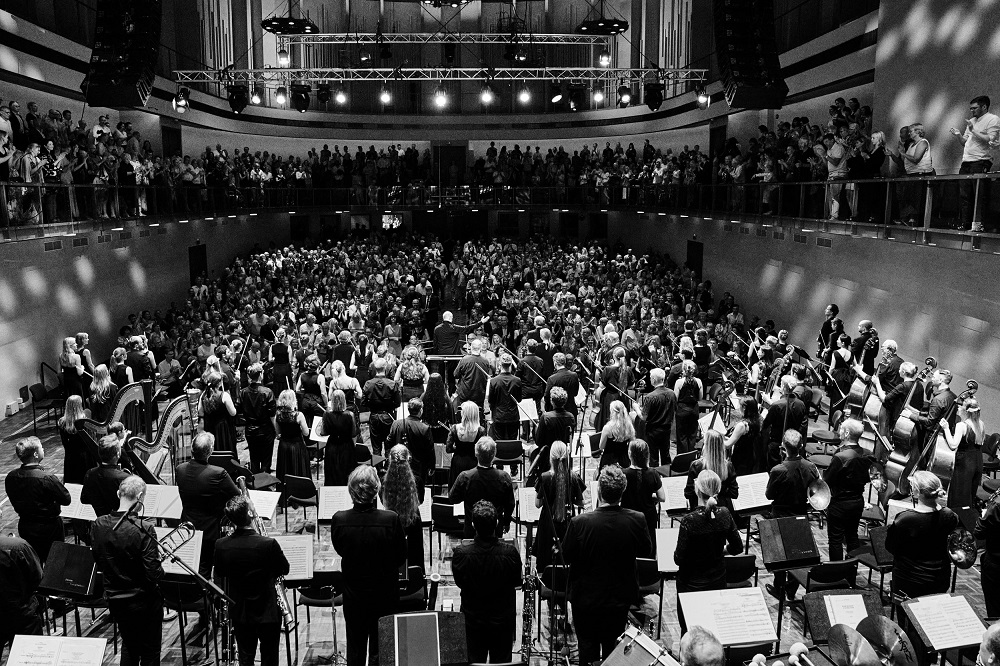 Part Two delivered, in addition to the finer of the two D&T performances, the kind of encores in which this team excels. Josef Strauss’s Delirien Waltz, with its extraordinarily dark and dramatic introduction, brought the expected lilt and smiles as the end of the official programme – prompted no doubt by Neeme’s inimitable way with the Dynamiden Waltz at the Academy Final Concert last year – followed by more shades than you’d have thought possible in Johann the Younger’s Pizzicato Polka and supreme swagger in Berlioz’s treatment of the Rakoczy March, which goes way beyond the norm – as did the performance – in the build-up and explosion of the last third. Vintage Berlioz, vintage Pärnu.
Part Two delivered, in addition to the finer of the two D&T performances, the kind of encores in which this team excels. Josef Strauss’s Delirien Waltz, with its extraordinarily dark and dramatic introduction, brought the expected lilt and smiles as the end of the official programme – prompted no doubt by Neeme’s inimitable way with the Dynamiden Waltz at the Academy Final Concert last year – followed by more shades than you’d have thought possible in Johann the Younger’s Pizzicato Polka and supreme swagger in Berlioz’s treatment of the Rakoczy March, which goes way beyond the norm – as did the performance – in the build-up and explosion of the last third. Vintage Berlioz, vintage Pärnu.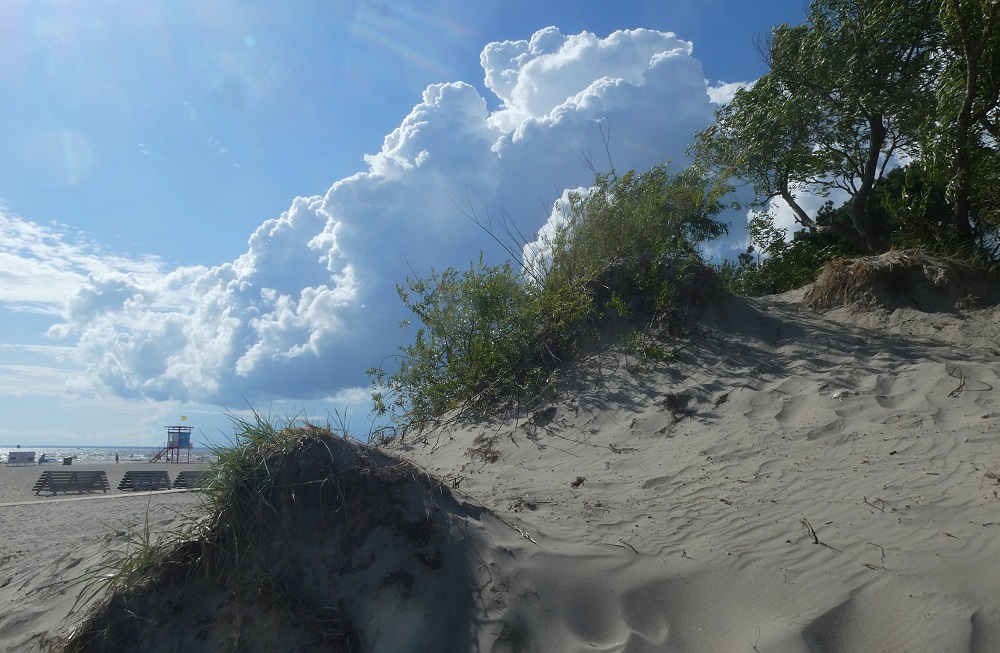
Comments